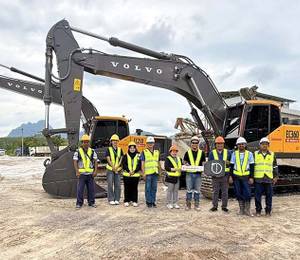Malaysia’s construction giant IJM Corporation Berhad has outlined its climate strategy that will employ a two-pronged approach: its transition to net zero and adaptation to climate resilience.
To realise its net zero ambitions by 2050, IJM’s carbon reduction strategy will focus on four key mitigation pillars across its own operations and its value chain. These include energy optimisation, supply chain advocacy, industry engagement and product stewardship.
IJM will set its emissions reduction aspirations with reference to the Science Based Targets initiative (SBTi) criteria and recommendations for its Scope 1, Scope 2 and Operational Scope 3 emissions.
To reduce the embodied carbon from purchased goods, the group aims to engage with at least 60% of its supply chain, by value, envisioning their adoption of emission reduction targets. While the group’s ability to address the embodied carbon from purchased goods is dependent on supply chain innovation and active partnerships, IJM recognises that this category formed 84% of its FY2022 total emissions and is critical to achieving its net zero target.
Lee Chun Fai, CEO and managing director of IJM, said, “We have carried out an extensive review of our carbon emissions over the last year and a half. IJM shares the global commitment to reducing our carbon footprint and supports Malaysia’s ambition to become a carbon neutral nation by 2050.”
IJM will set its baseline year to FY2023, which represents a more normalised year of operations, and will expand its assessment to include the emissions from its operations in India as well as three additional categories of Scope 3.
As an official supporter of the Task Force for Climate-related Financial Disclosures (TCFD), IJM performed a physical and transition risk and opportunity assessment, covering its five main businesses of construction, property, industry, port and toll. The assessment was tested against a few global temperature scenarios between 1.5°C and 4°C by the IPCC, IEA and NGFS.
The assessment revealed that increased frequency and severity of identified climate stressors could result in business disruptions and loss of revenue, while the global transition to a low-carbon economy entails risks and opportunities from changing regulation, market, technology and reputational drivers.
As part of its adaptation strategy, IJM will adopt a number of measures, housed under three resilience pillars – climate risk integration into the organisational matrix, asset and business adaptation that includes the value chain, and TCFD alignment.
IJM said further details of the group’s climate strategy will be elaborated in the upcoming FY2023 sustainability statement.
Image: IJM











